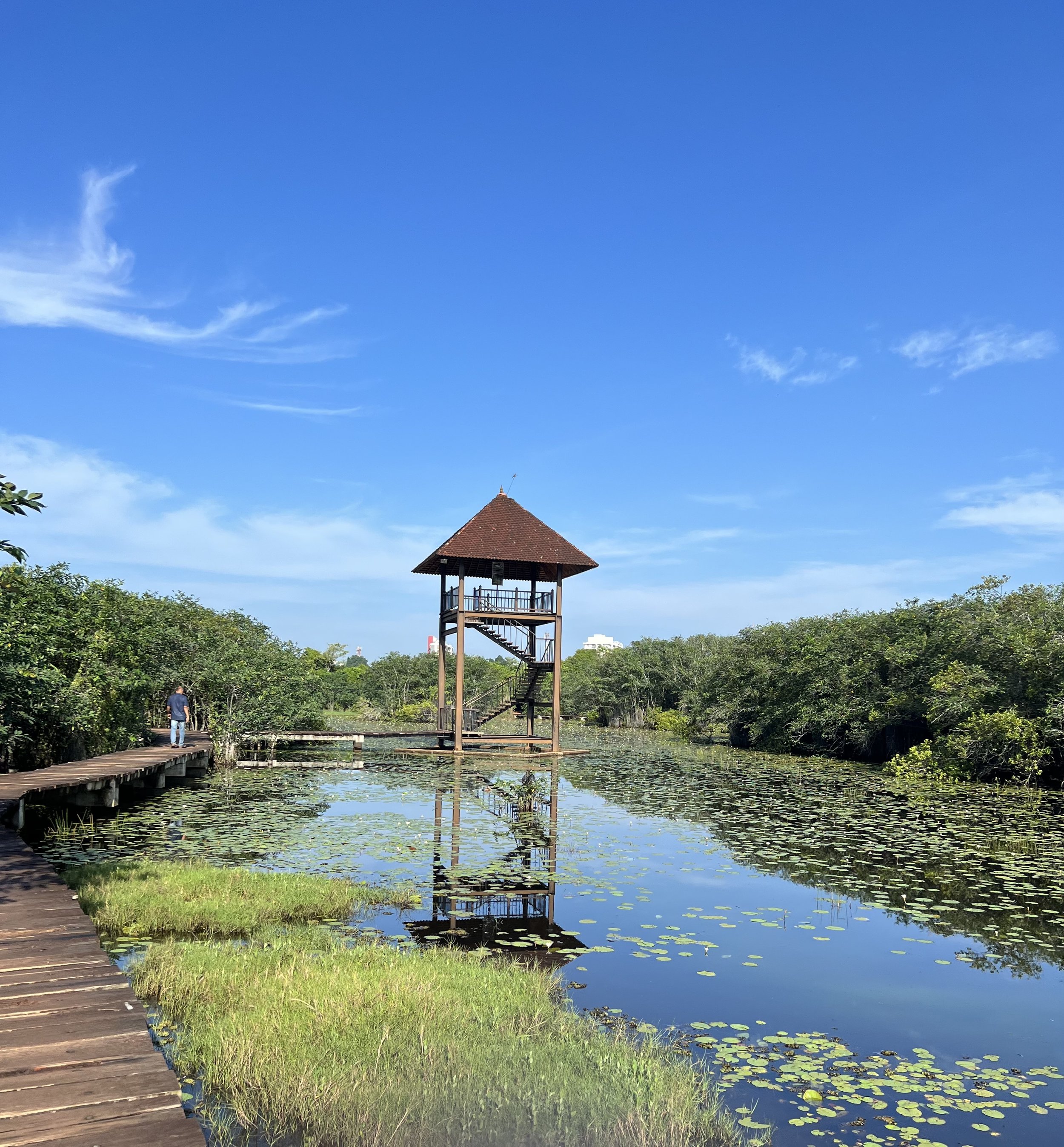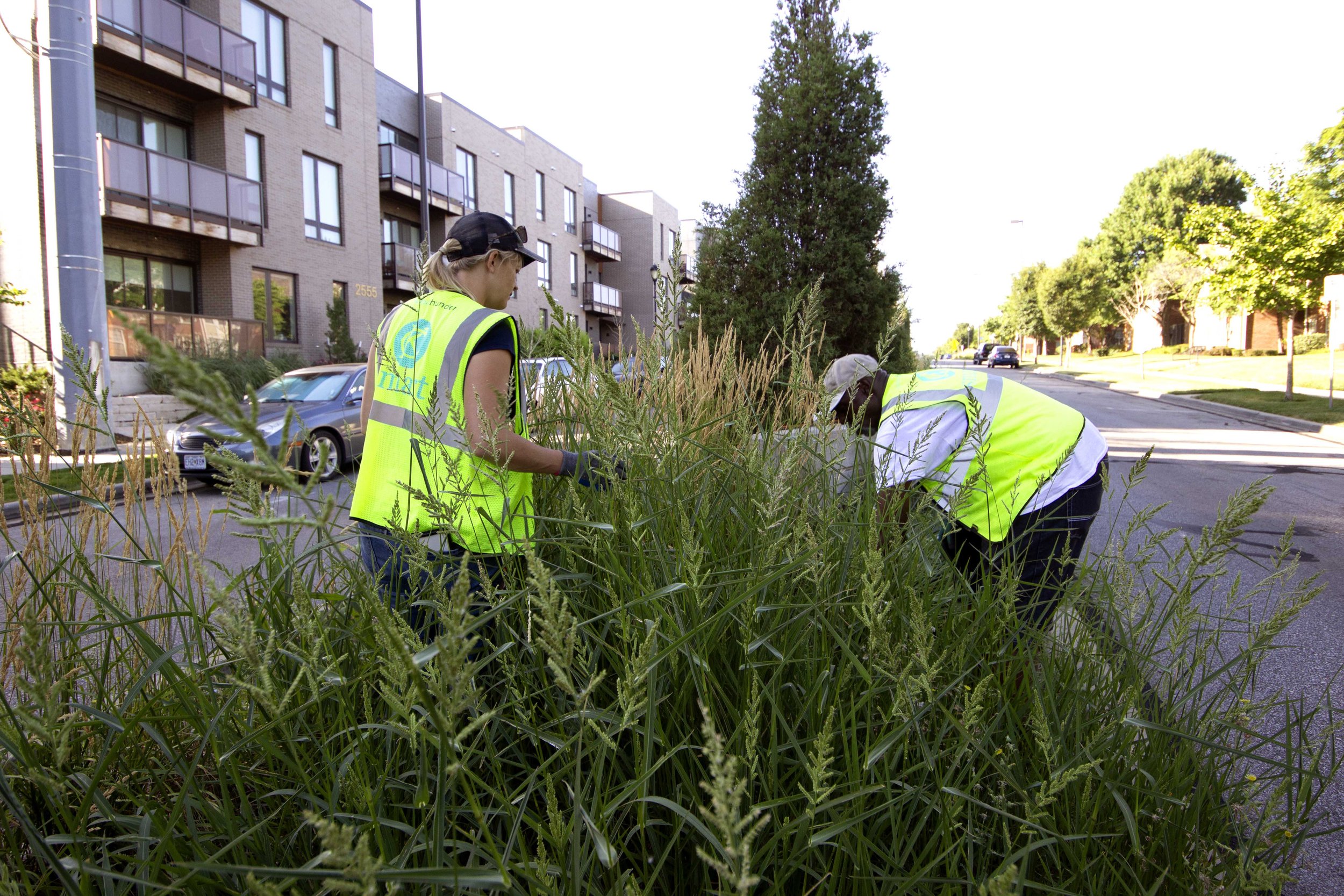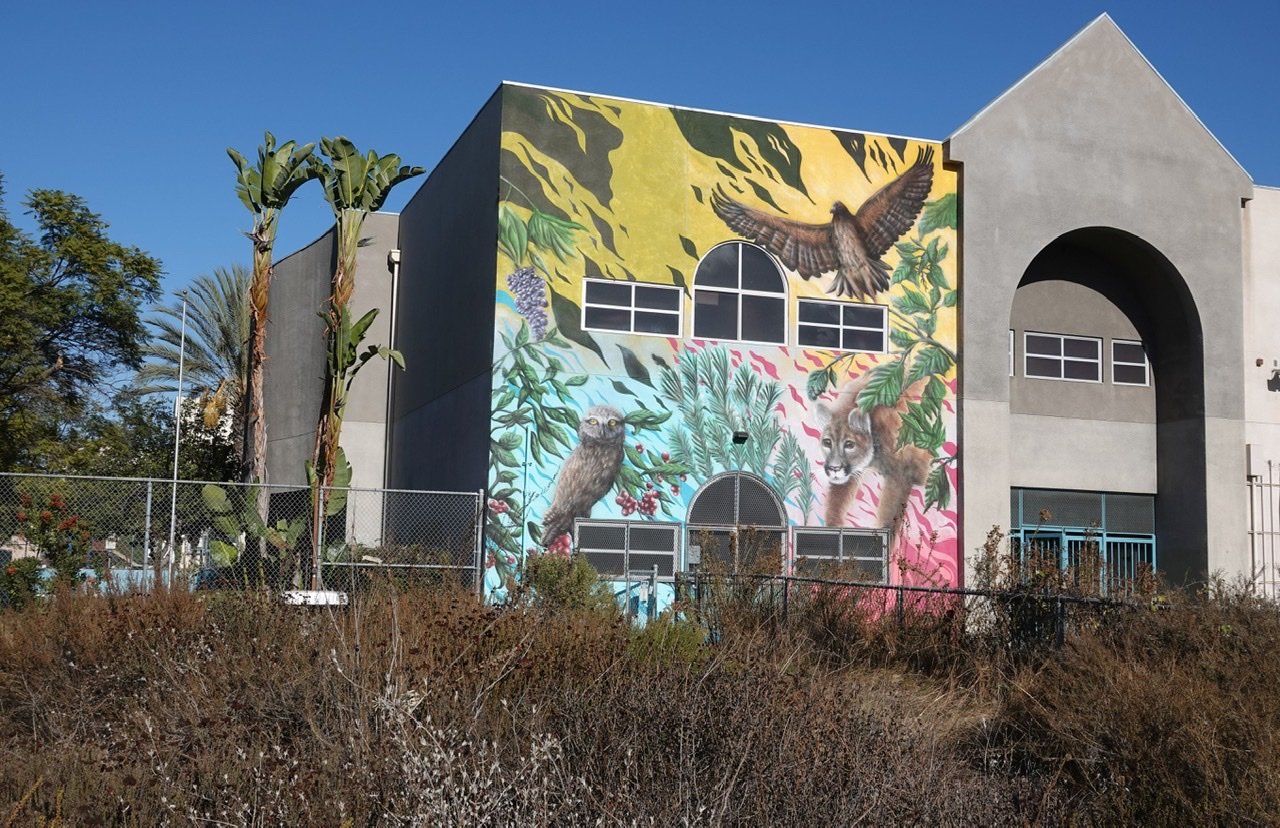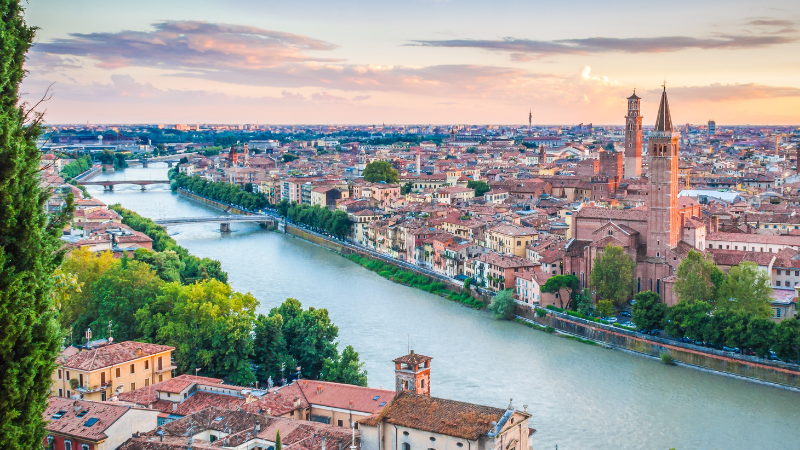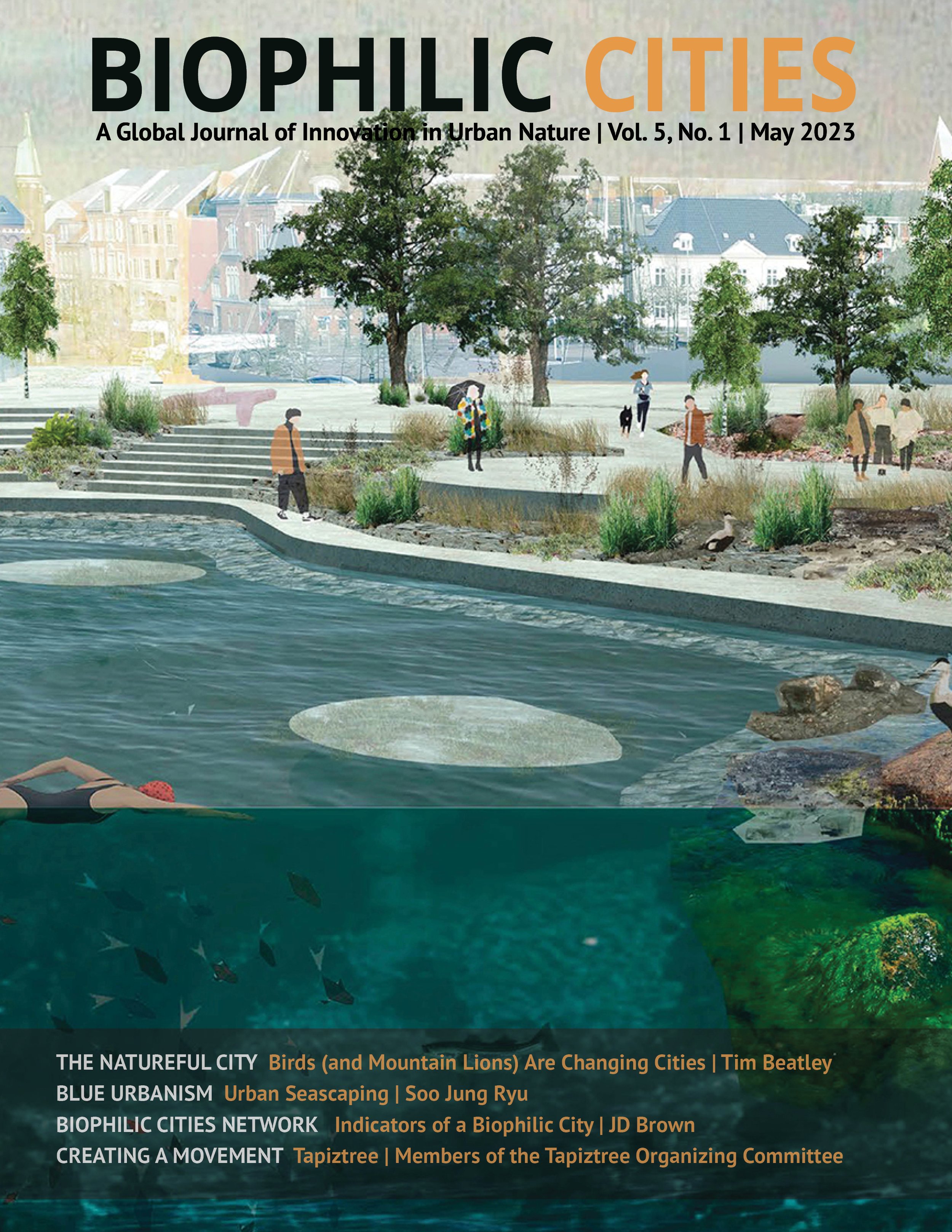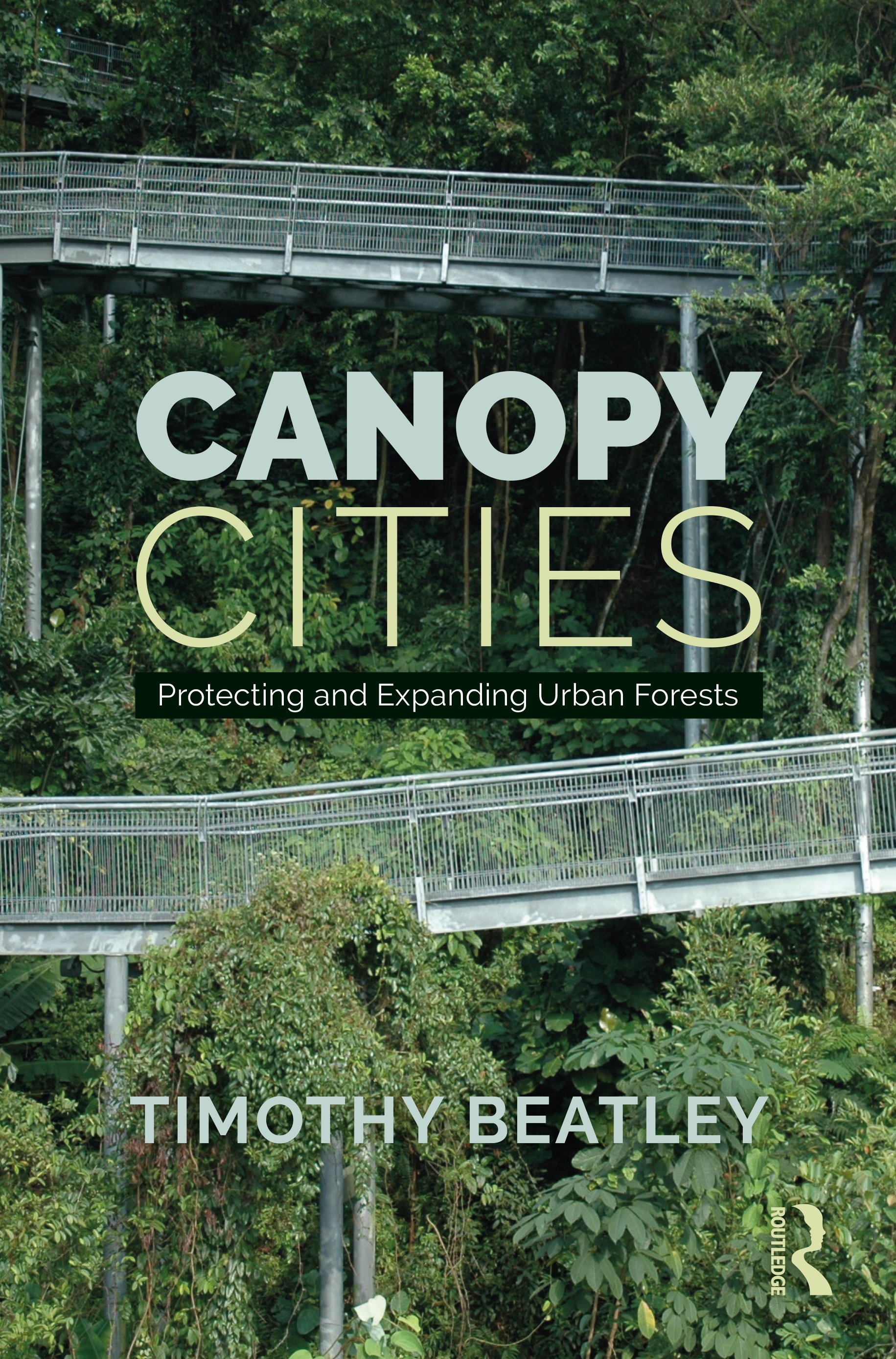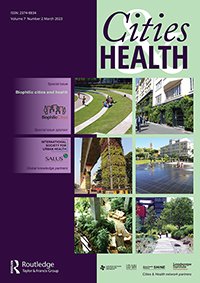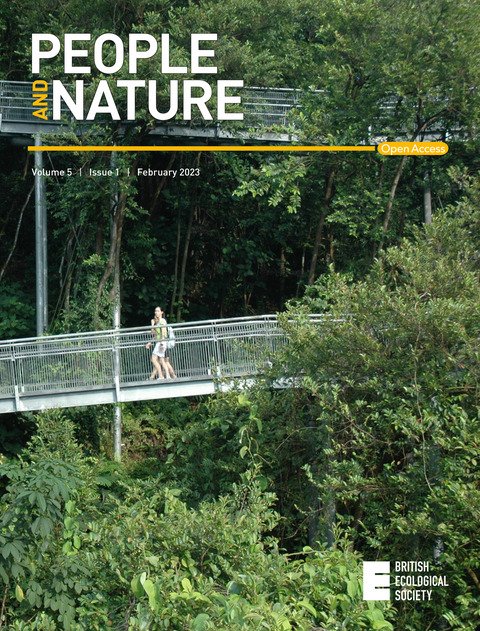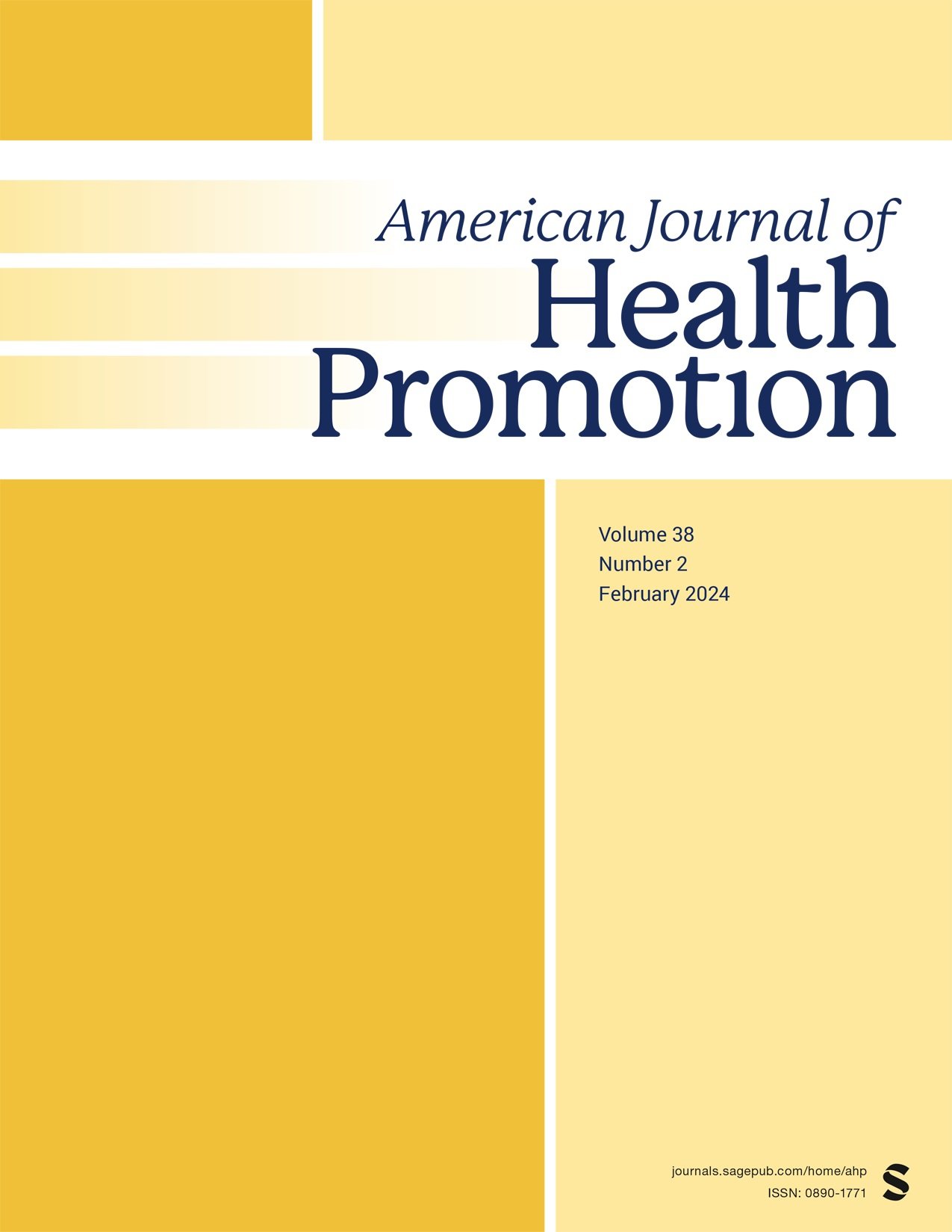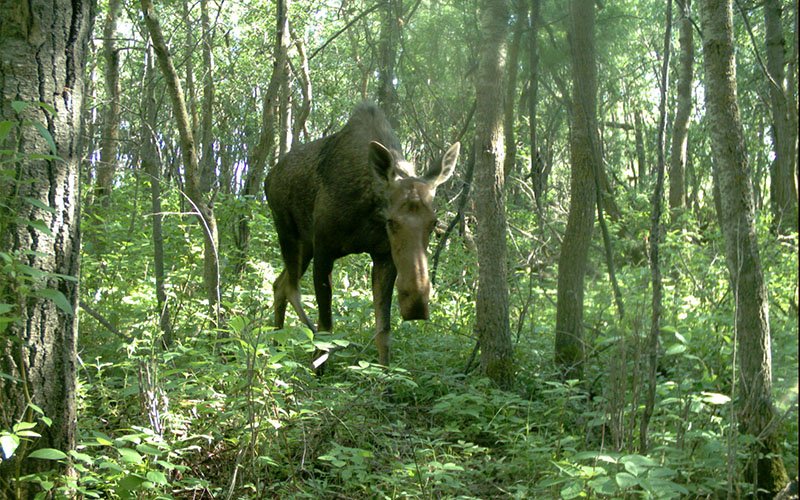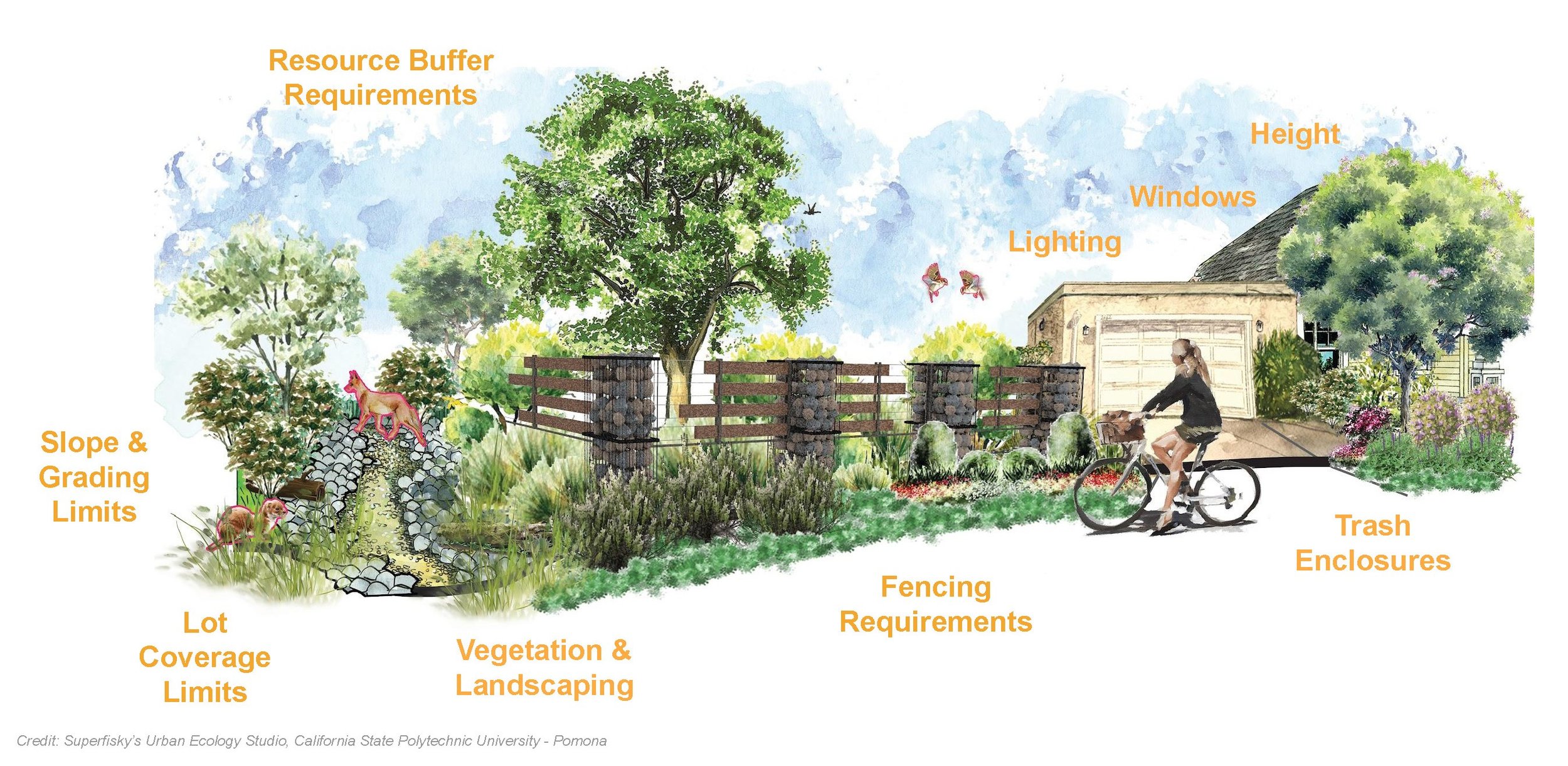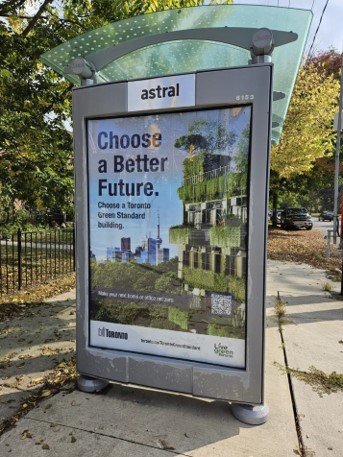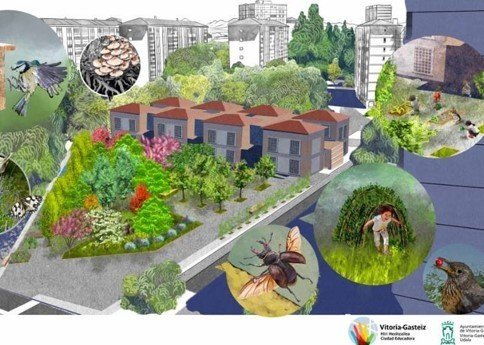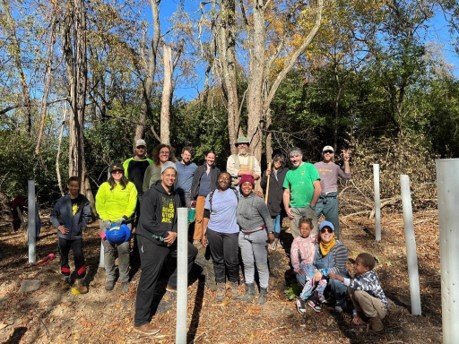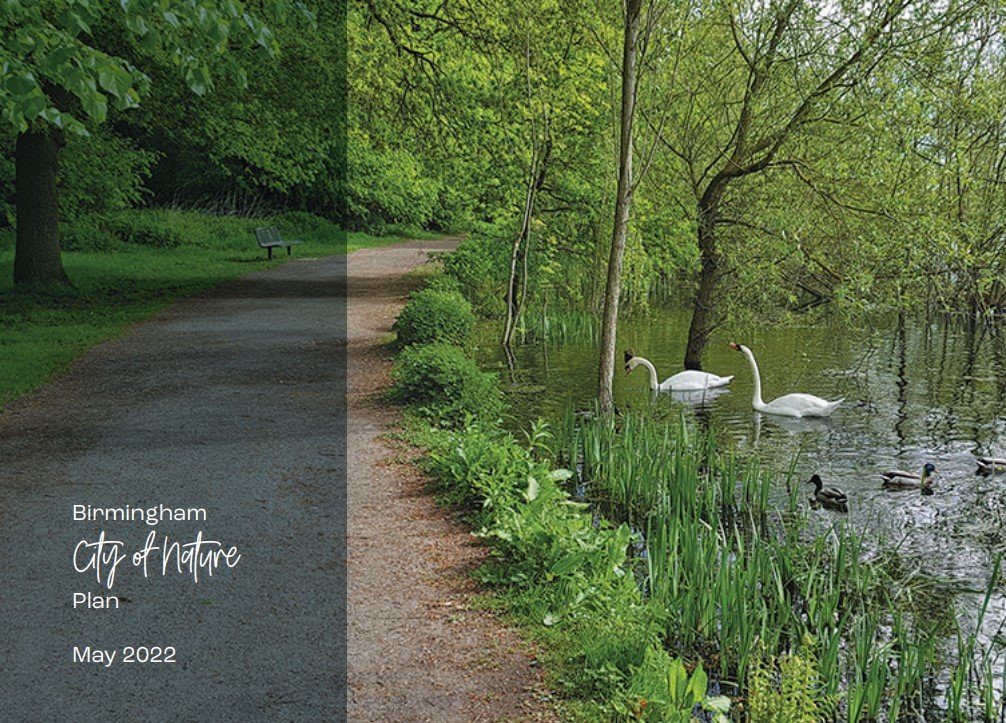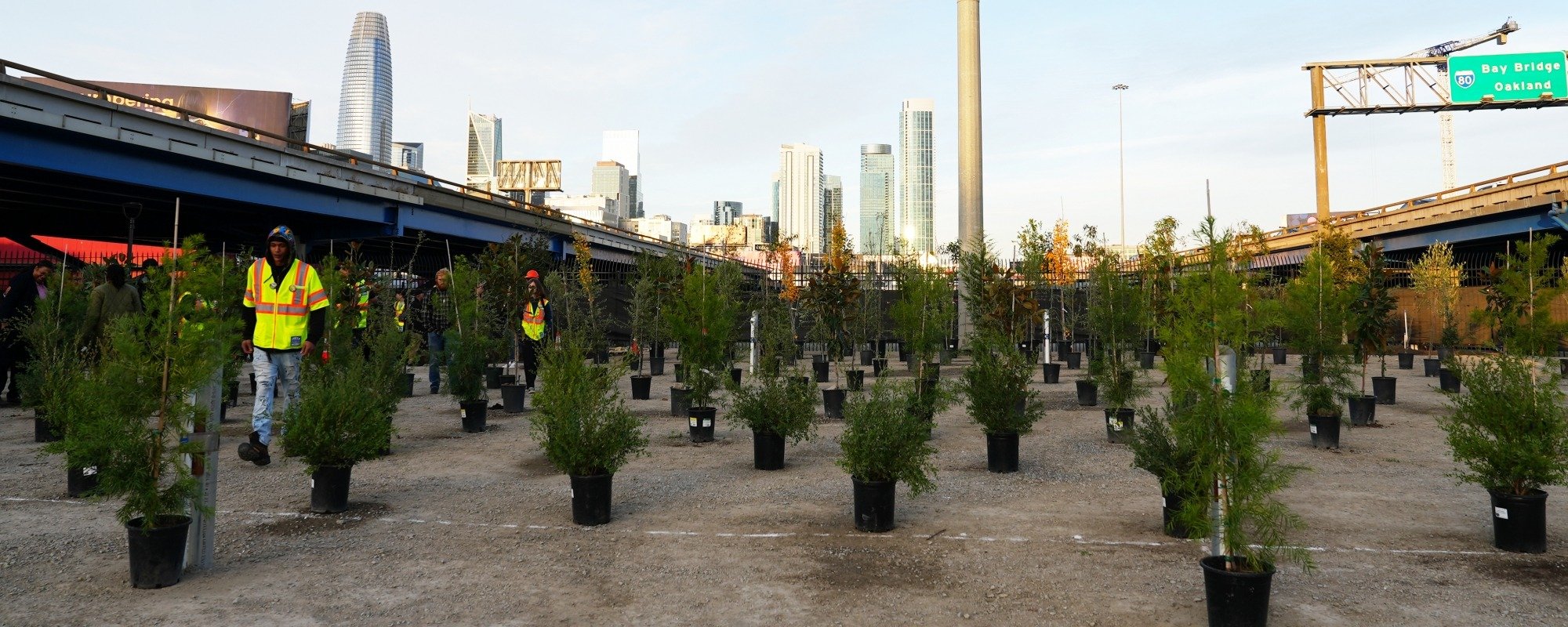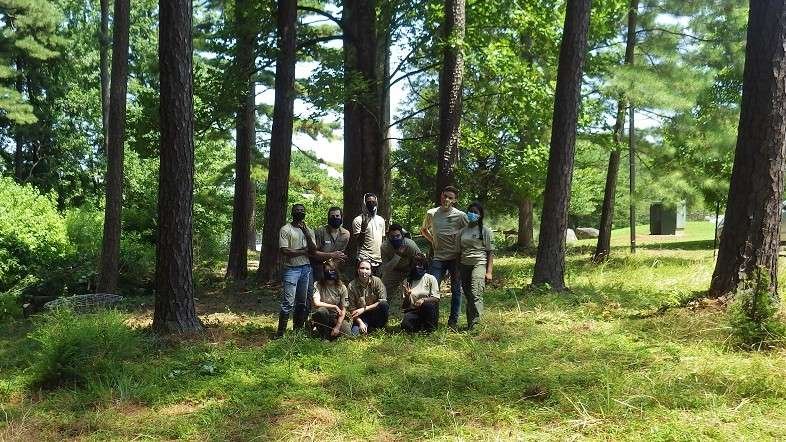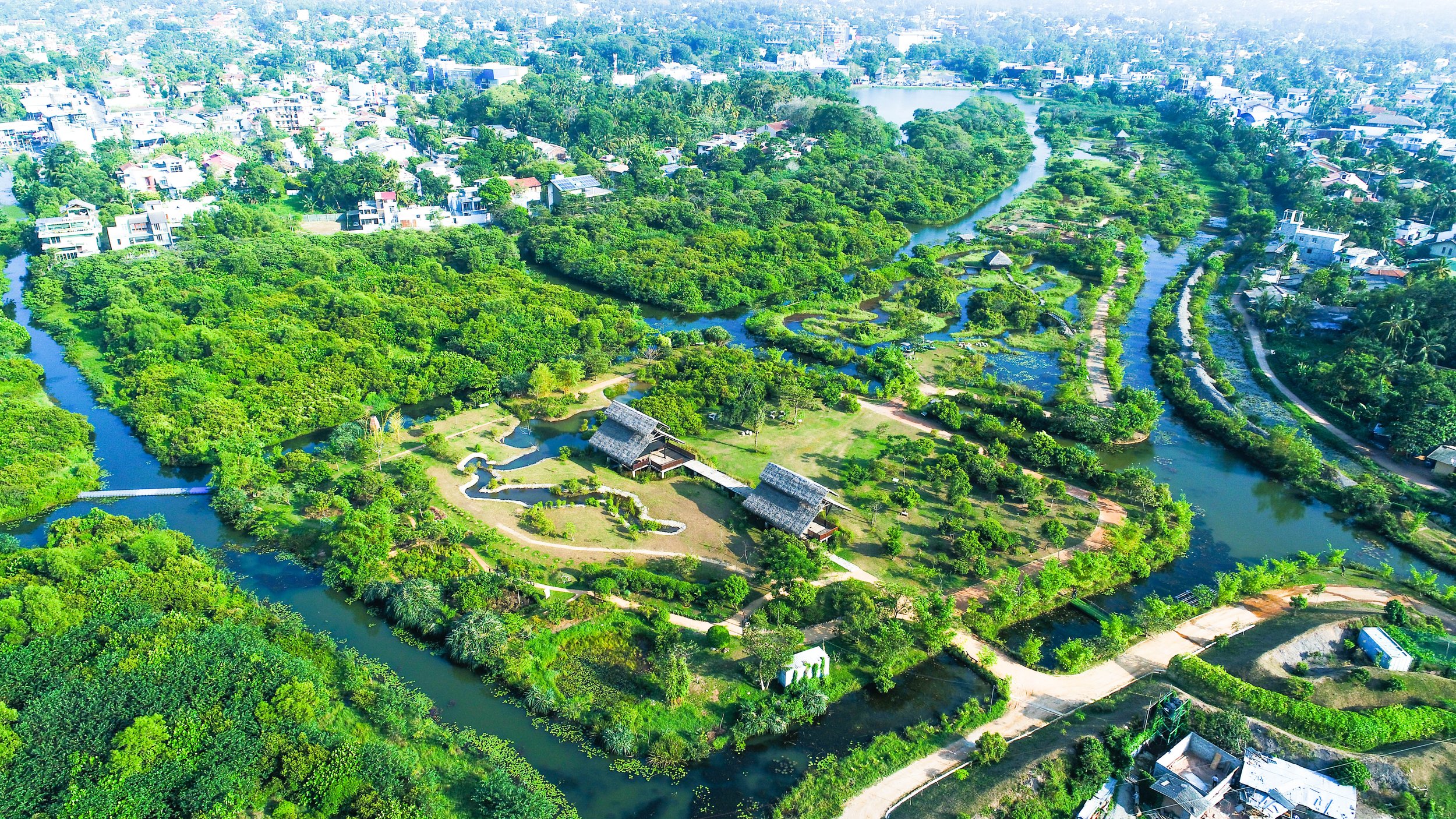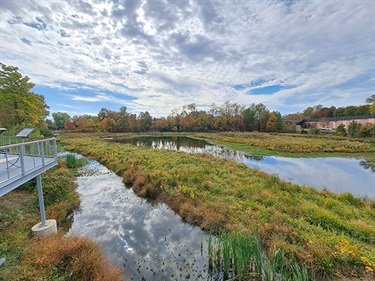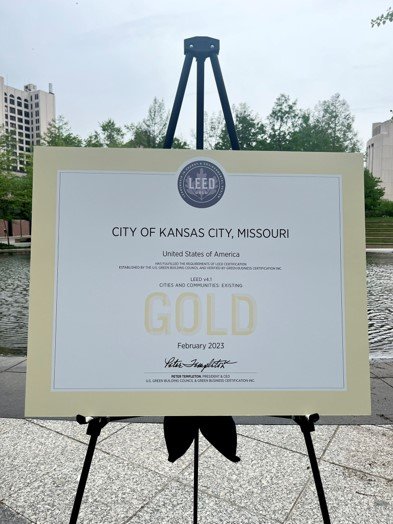biophilic cities network | seeds, roots + shoots
2023 annual report
Verona “naturAzioni è” photography contest winner. “The forest in the city” by Andrea Vanacore.
Connecting Cities + Nature
The Biophilic Cities Network is a global collaboration of partner cities, organizations and individuals committed to working in concert to conserve and celebrate nature in all its forms and the many important ways in which cities and their inhabitants benefit from the biodiversity and wild urban spaces present in cities.
expanding newwork of partner cities
2023 saw the addition of five new partners in the Biophilic Cities Network. Learn more about the biophilic elements, policies and programs of these cities:
new resources
Visit the updated Resources page for more from the Biophilic Cities library
films
Webinars
EXPERT PRESENTATIONS
GRAND CHALLENGES
Facilitated by a network platform, partners collectively pursue eight grand challenges. Through annual reporting, partners communicate progress towards biophilic aspirations and network grand challenges.
Biophilic Cities Network Platform
Grand Challenges
1. Abundant Biodiversity
The Challenge: To embrace the ethical obligation to promote native species diversity for the sake of humans and nonhumans alike. To reverse wherever possible losses in species biodiversity, native habitat, and ecological connectivity. To envision cities as arks where biodiversity can co-exist, regenerate and even flourish with urban density.
Edmonton, Canada
The city and the University of Alberta, through their WildEdmonton collaboration, are using remote cameras to monitor wildlife presence and abundance throughout the city and contributing to a larger Urban Wildlife Information Network study of impacts of climate and urbanization on wildlife.
Los Angeles, California
The City of LA is in the process of adopting a Wildlife Ordinance with included regulations that would limit development in highly vegetated and steeply sloped areas to reduce impacts to wildlife movement and habitats. The city was also recertified in 2023 by the National Wildlife Federation as the largest city certified as a Community Wildlife Habitat. Supporting the recertification are metrics quantified by the LA City Biodiversity Index.
Wellington, New Zealand
The Predator Free Wellington initiative continues to reach new milestones, as this year marked the successful removal of invasive predators from the city’s Miramar Peninsula. For more information on the initiative, watch the inspiring video at right.
2. Creating a Movement
The Challenge: Create and support the capacity of a generative social impact network that includes public and private partners to implement the concepts of biophilic planning and design in the form of adopted policy and practice.
Kansas City, Missouri
The city has hired a Natural Systems Coordinator to specifically focus on implementing nature-based climate solutions from the city’s Climate Protection and Resiliency Plan and received EPA funding to hire an Environmental Justice Advocate.
Phipps Conservatory (Pittsburgh, PA)
In September, Phipps Conservatory was awarded a Green Power Leadership Award for the creation of the Climate Toolkit, which is a collaborative opportunity for museums (which includes public gardens, zoos and aquaria) who want to learn how to aggressively address climate change within their own organizations and inspire the communities they serve to follow their lead. Currently, the Climate Toolkit embraces thirty-two goals for addressing climate change within the categories of energy, food service, transportation, plastics, landscapes and horticulture, investments, visitors and research. To date, 135 institutions serving more than 68,700,000 annual visitors have joined the Climate Toolkit.
Los Angeles, California
Building on new initiatives and policies, the city published two new resources intended to inspire biodiversity conservation. The City of LA Urban Nature Guidebook showcases 20 native plant gardens, greenways, natural parks, and wildlife reserves around the city. Each entry highlights collaborative partnerships and demonstrates that nature can thrive in a variety of settings. The LA Biodiversity Guidelines were developed jointly by the City and County of Los Angeles to provide guidance to public and private entities on how to best design, construct, and landscape projects so that they improve local habitat quality.
San Francisco, California
The city is participating in collective efforts both locally and globally. Locally, the city has joined the California Academy of Sciences led inter-organizational collective impact collaboration, Reimagining San Francisco. The collaboration includes 40 members from local, state and federal government, NGOs, educational institutions and local business organizations, whose work is to find funding for and implement projects that meaningfully improve local nature and equitable access to local nature for all San Franciscans. Globally, the city is participating in the C40 Urban Nature Accelerator program, reporting this year to global partners on progress towards agreed targets and goals for urban nature.
3. Ecological Wonder
The Challenge: Invite appreciation of the intangible qualities of nature across the urban landscape through education, art and experiences that inspire a sense of awe, a connection to the larger world, and a stewardship responsibility.
Miami-Dade County, Florida
The county hosted a number of community nature programs over the course of the year to connect thousands of residents with the living environment. The county held International Dark Sky Week countywide events to build support for the importance of reducing light pollution for the benefit of humans and nonhumans alike, while more than 4,000 volunteers collected 30,000+ lbs of trash during Baynanza in support of the health of Biscayne Bay.
Toronto, Ontario
Over the course of 2023, the city engaged over 12,000 people in stewardship, outreach/education activities. Additional nature engagement including hiring 8 Ravine Youth Team hands-on ecological work experience, providing leadership training for 20 local ravine champions, and funding 13 microgrants for communities to experience nature as part of the InTO the Ravines program in partnership with the local non-profit Park People.
Verona, Italy
The city "naturAzioni, walking between city and landscape“ project is structured around 5 lines of action: Research on Biodiversity, Environmental Education, Land Trails, Water Trails, Civic Engagement. The main goal of the project is the enhancement and rediscovery of the city's natural capital by fostering citizen participation.
Vitoria-Gasteiz, Spain
The schoolyard naturalization project seeks to transform the outdoor spaces of the primary educational centers of Vitoria-Gasteiz. The goal is to adapt them to climate change and incorporate them into the city's green infrastructure system, as well as to create resources for educational practices. In total, naturalized areas were created at 6 different schools with a total area of around 4 ha. Indicators of biodiversity at the schoolyard will be measured through the city’s citizen science program.
4. Equitable Nature
The Challenge: Ensure that nature is equitably accessible for all citizens across the urban landscape by bridging both physical and psychological barriers to access; in particular, in the communities where access to nature has historically been the most limited and where increased access to nature can have the greatest impact in terms of quality of life, community resilience, health and safety.
Pittsburgh, Pennsylvania
The city has developed two park masterplans in partnership with local community groups and worked with Resilient Cities Catalyst through an ICLEI/google partnership to identify heat island impacts in Pittsburgh and plant trees in two neighborhoods with high vulnerability to heat.
Birmingham, England
Over the last year, the city has begun implementation of the City of Nature 25 Year Plan that was adopted in 2022. The plan is built around the city’s Environmental Justice Index (EJI), which maps those areas of the city most in need of green space and green infrastructure. Ecological enhancements have been implemented in 5 inner city parks and a further 43 parks are in the process of being assessed.
Raleigh, North Carolina
The city was awarded $1M from the US Forest Service to support urban forestry and the Street Tree Equity Project. With the funding, the city will conduct tree planting and maintenance in disadvantaged areas of Raleigh to improve tree health, provide environmental and aesthetic benefits, address safety concerns and provide new canopy.
San Francisco, California
The city adopted an Environmental Justice Framework in 2023 to establish a clear set of visions and priorities to advance health in communities of color and low-income. The framework outlines a set of visions and priorities to be incorporated into the city’s General Plan to ensure environmental justice is integrated throughout. It also includes guidance to city agencies and other stakeholders as to how they can address environmental justice in their work. The city’s public works department also created a first ever City Street Tree Nursery, located in an underserved neighborhood, that incorporates workforce development programming and the growing of local native trees.
5. Flourishing Health and Wellbeing
The Challenge: Build consensus that daily contact with nature is an essential element of positive health and wellbeing, longevity, and quality of life. Support documentation that enabling engagement with nature is a cost-effective investment in preventative health.
Singapore and Austin, Texas
A few different long-term projects that support residents’ health through a connection to nature received recognition in the past year. The Jurong Lakeside Garden in Singapore and the Waterloo Greenway in Austin were identified by the Urban Land Institute as case studies in bringing nature to urban residents. The Singapore Rail Corridor also saw the completion of an additional 8km section with 12 new public access points, increasing the total length of the trail to 24km.
Vitoria-Gasteiz, Spain
The renovation of the street "Los Herrán" and its surroundings aims to improve the lives of residents and pedestrians by creating more green areas, less noise pollution, more resting and leisure areas, and greater pedestrian and bicycle mobility. It will also become a key urban area for climate adaptation thanks to its capacity to reduce the heat island effect, increase the infiltration and storage capacity of rainwater and increase carbon capture.
6. Markets for Social Impact
The Challenge: Support broad investment in natureful cities by diverse public and private participants through the communication of the socioeconomic benefits of biophilic planning and design, the establishment of standards and metrics, and the transformation of underlying legal, cultural and social systems that prioritize, encourage, and incentivize investment in biophilic planning and design.
Birmingham, United Kingdom
Ahead of the UK-wide statutory introduction of a requirement for Biodiversity Net Gain in new major development projects, the city has created a Nature Recovery Network strategy to identify sites of critical ecological value on both public and private lands. Future biodiversity gains could be obtained through mitigation and supporting infrastructure at identified high value sites.
Raleigh, North Carolina
The city supports multiple Conservation Corp Initiatives for local teens and received recognition this year at the Environmental Awards held at the Earth Day Celebration in 2023. The initiatives include two Conservation Corps programs, the Youth Conservation Corp Program and the Partnership Raleigh Conversation Intern Program, with emphasis on career development, conservation education, and hands on stewardship opportunities.
7. Nature Based Resilient Communities
The Challenge: Enable community and ecosystem sustainability and adaptation through nature-based solutions to the conditions of changing climate, environmental degradation, natural disaster, and social unrest.
Colombo, Sri Lanka
The city opened its newest and third wetland park, Kotte Rampart, in February 2023. A fourth wetland park, Gothatuwa, is currently under construction. The city is certified as a Ramsar Wetland City and the wetland park network provides wildlife sanctuaries in addition to myriad recreational and educational services.
Miami-Dade County, Florida
In 2023, the county allocated $15 million to acquire environmentally endangered lands on the Environmentally Endangered Lands (EELs) Program Acquisition List. The EEL Program also achieved a significant milestone in the past year by restoring, enhancing and maintaining more than 1,250 acres of environmentally endangered lands under its management. These lands are critical habitat for many endangered species. The county is also exploring in collaboration with federal agencies, the potential for nature-based solutions to aid in Miami’s response to sea level rise.
Singapore
Singapore’s landscape management and tree program was the feature of a New York Times piece as an international model for climate adaptation and extreme urban heat islands.
8. Symbiotic Built Environment
The Challenge: Foster the design of living architecture by integrating nature directly and indirectly into the fabric of urban infrastructure to respond to the innate evolutionary connection that humans have with the natural world. The aim to create a personal and collective connection with the built environment with resulting identifiable, beneficial impacts for social cohesion, productivity and wellbeing.
Arlington, Virginia
The city’s new Ballston Wetland Park has expanded capacity to hold storm runoff from I-66. Cleared of sediment and now capable of taking excess rainwater from 450 surrounding acres, the retrofitted wetland system improves stormwater flow and filtering – plus capture of trash – while also serving as a wildlife refuge and pastoral commons within its “urban village” setting. The renovated wetland includes thousands of native plants, a new boardwalk areas and fresh interpretive signs.
Kansas City, Missouri
The city achieved LEED Gold certification in the LEED for Cities rating program for implementing practical and measurable strategies and solutions to improve sustainability and residents' quality of life.
Raleigh, North Carolina
The city has adopted a Green Stormwater Infrastructure (GSI) Policy that requires the evaluation of GSI on city-led projects and promotes its installation to reduce stormwater runoff, improve water quality, and provide ecological benefits. By prioritizing the use of GSI for its own projects, the city hopes to lead by example to advance the use of GSI and is exploring the creation of incentives for the incorporation of this infrastructure into development projects.
Vitoria-Gasteiz, Spain
The old town naturalization project focuses on the city’s Medieval Quarter with the development of small-scale green infrastructure solutions. The goal is to improve the quality of the urban landscape and its environment, increase the relationship of nature with public space, enhance biodiversity and foster natural-urban resilience. In the first phase, the city is assessing baseline conditions in order to propose interventions through public participation in a second phase (2024).


